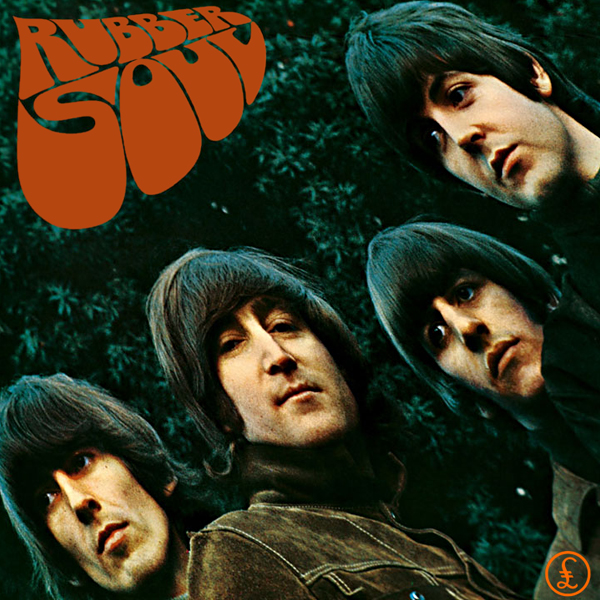
Although we now consider the Beatles to be gods inviolate, in the middle of the 1960s they were considered largely a commercial product, and a highly perishable one at that. Pop had yet to become art—the grownups who ran the record company wanted to get as much out of the boys as they could before the fans moved on to somebody else. So the Beatles recorded songs in bunches on the fly, to be chopped up and cobbled together into albums, with different versions for North America and the UK. Get ’em out as fast as possible, the thinking went, while the goose is still laying golden eggs.
Rubber Soul was different, a least a little bit. Unlike earlier albums, most of it was recorded over an entire month set aside especially for studio work. True, that month was scheduled so the album could be released in time to score during the 1965 Christmas season, and the album was released in two different versions for different sides of the Atlantic. But the result represented a major leap forward for the band, achieving a new level of sophistication earlier albums had only hinted at.
Rubber Soul is the closest thing the Beatles ever made to a folk-rock album,right on the Dylan/Byrds continuum, and the North American version was programmed and sequenced to emphasize that sound. Many critics prefer it to the UK Rubber Soul as a more coherent album. It opens with the acoustic “I’ve Just Seen a Face,” unlike the UK version, which starts off with “Drive My Car.” That song, and other uptempo numbers including “Nowhere Man” and “If I Needed Someone,” were left off the North American release entirely, and would not appear in the States until Yesterday and Today in 1966.
Both versions of the album contain two of the loveliest songs in the Beatles’ repertoire, “Michelle” and “In My Life.” “Nowhere Man” is the first Beatles song to deal exclusively with something other than romantic love. “What Goes On” is the only Beatles song to be credited to Lennon/McCartney/Starkey, although Ringo once claimed his contribution was only about five words. Most of the song had been written by John Lennon before the band was famous.
When the Beatles albums were released on CD beginning in 1987, the decision was made to use the UK configurations, and the American versions disappeared from the market. In 2004 and 2006, Capitol reissued them in box sets called—wait for it!—The Capitol Albums. Rubber Soul appeared in Volume 2. Each of the reissues contains both the stereo and mono mixes for each album. Sure, you could probably create your own American Rubber Soul from the stuff on your own iPod right now, but you’d miss the the mixing and timing peculiarities that obsess hardcore fans.
Rubber Soul hit #1 on the Billboard album chart on January 8, 1966, and stayed at the top for six weeks, through February 18. It was taken out by an American group that would score as many #1 albums in 1966 as the Beatles would—three—and become an unlikely rival at the top of the charts. Read more about them in this space next time.





Comments